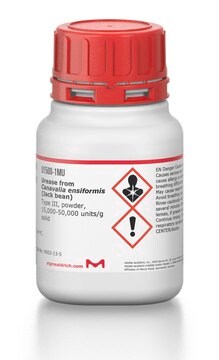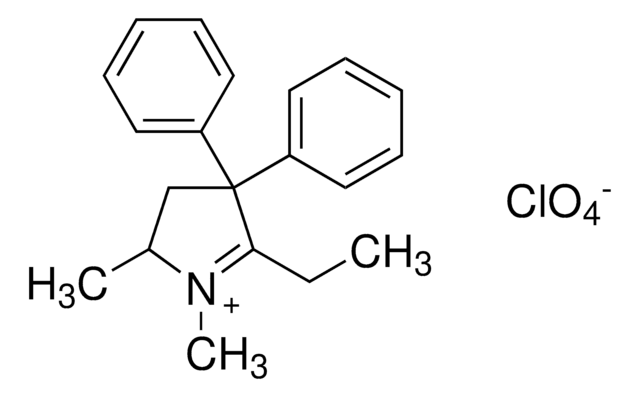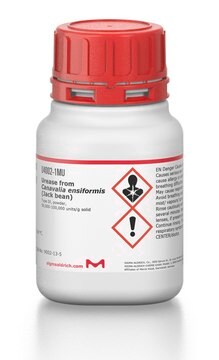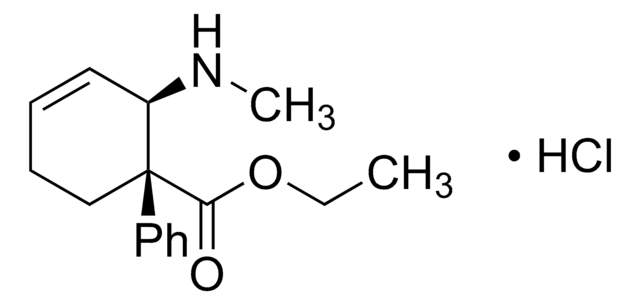E5264
2-Ethylidene-1,5-dimethyl-3,3-diphenylpyrrolidine perchlorate
analytical standard, for drug analysis
About This Item
Produits recommandés
Qualité
analytical standard, for drug analysis
Niveau de qualité
Contrôle du médicament
regulated under CDSA - not available from Sigma-Aldrich Canada
Technique(s)
HPLC: suitable
gas chromatography (GC): suitable
Application(s)
forensics and toxicology
veterinary
Format
neat
Température de stockage
2-8°C
Chaîne SMILES
OCl(=O)(=O)=O.C\C=C1/N(C)C(C)CC1(c2ccccc2)c3ccccc3
InChI
1S/C20H23N.ClHO4/c1-4-19-20(15-16(2)21(19)3,17-11-7-5-8-12-17)18-13-9-6-10-14-18;2-1(3,4)5/h4-14,16H,15H2,1-3H3;(H,2,3,4,5)/b19-4-;
Clé InChI
CBNJWAYHGKHAFJ-YOJQKEKBSA-N
Description générale
Application
Code de la classe de stockage
11 - Combustible Solids
Classe de danger pour l'eau (WGK)
WGK 3
Point d'éclair (°F)
Not applicable
Point d'éclair (°C)
Not applicable
Équipement de protection individuelle
Eyeshields, Gloves, type N95 (US)
Faites votre choix parmi les versions les plus récentes :
Déjà en possession de ce produit ?
Retrouvez la documentation relative aux produits que vous avez récemment achetés dans la Bibliothèque de documents.
Notre équipe de scientifiques dispose d'une expérience dans tous les secteurs de la recherche, notamment en sciences de la vie, science des matériaux, synthèse chimique, chromatographie, analyse et dans de nombreux autres domaines..
Contacter notre Service technique



![Poly[(R)-3-hydroxybutyric acid] natural origin](/deepweb/assets/sigmaaldrich/product/structures/129/476/7d1c924b-f644-4889-a2d6-d7a923ce382c/640/7d1c924b-f644-4889-a2d6-d7a923ce382c.png)



